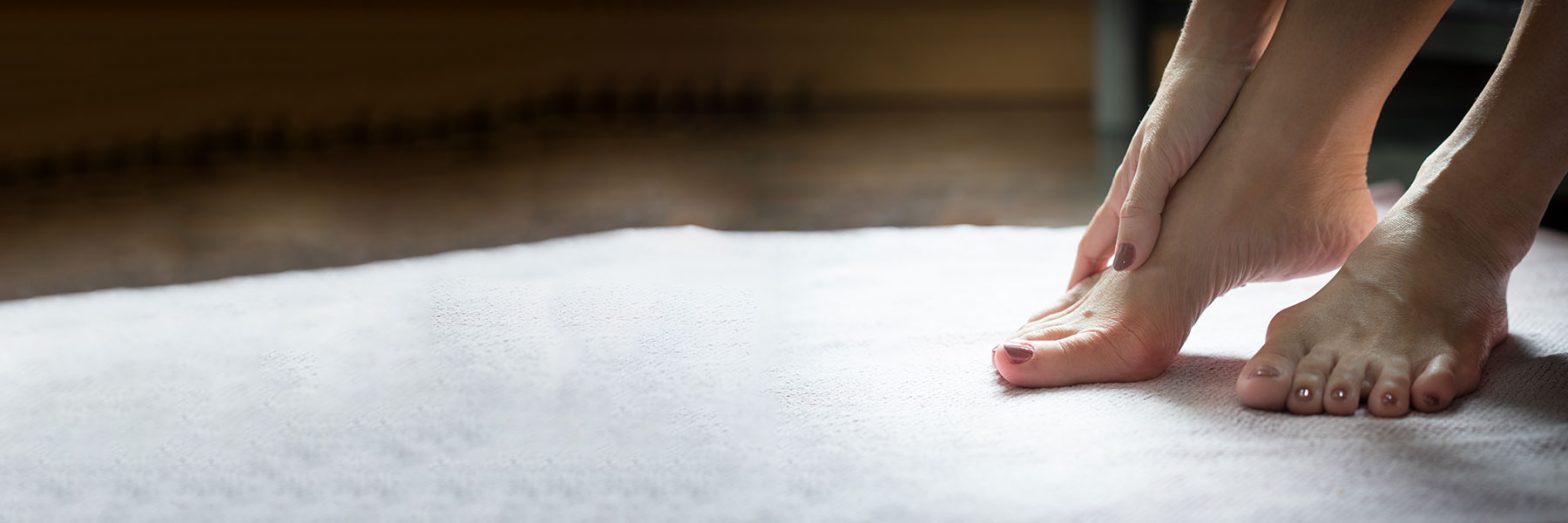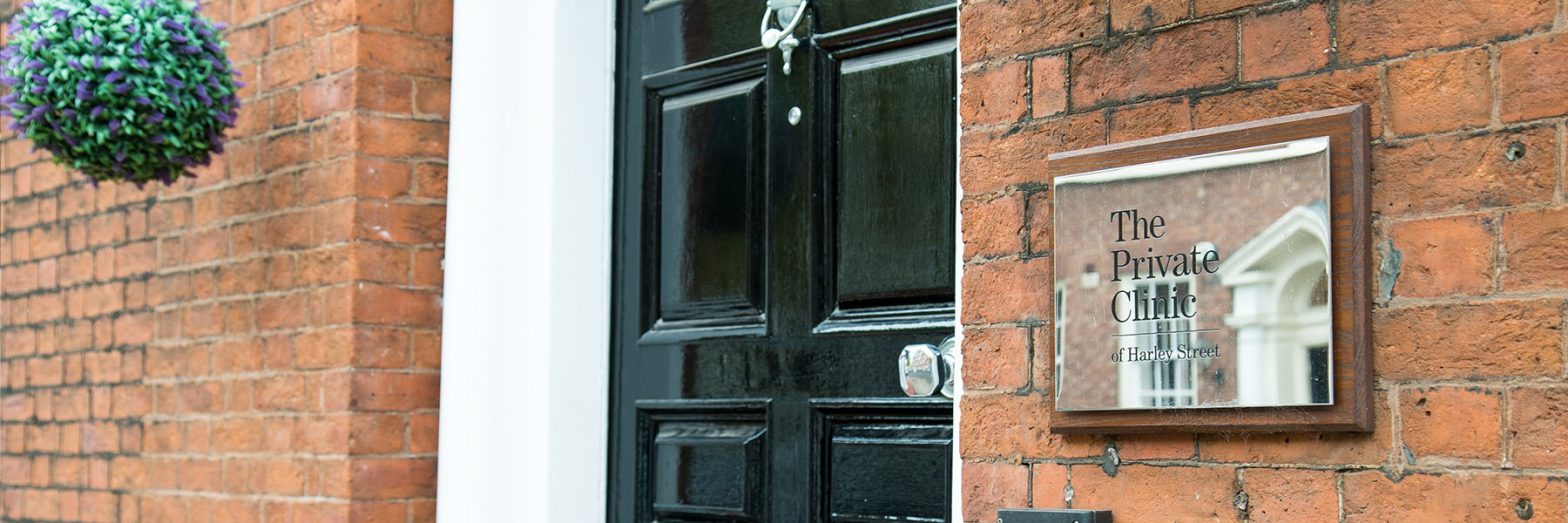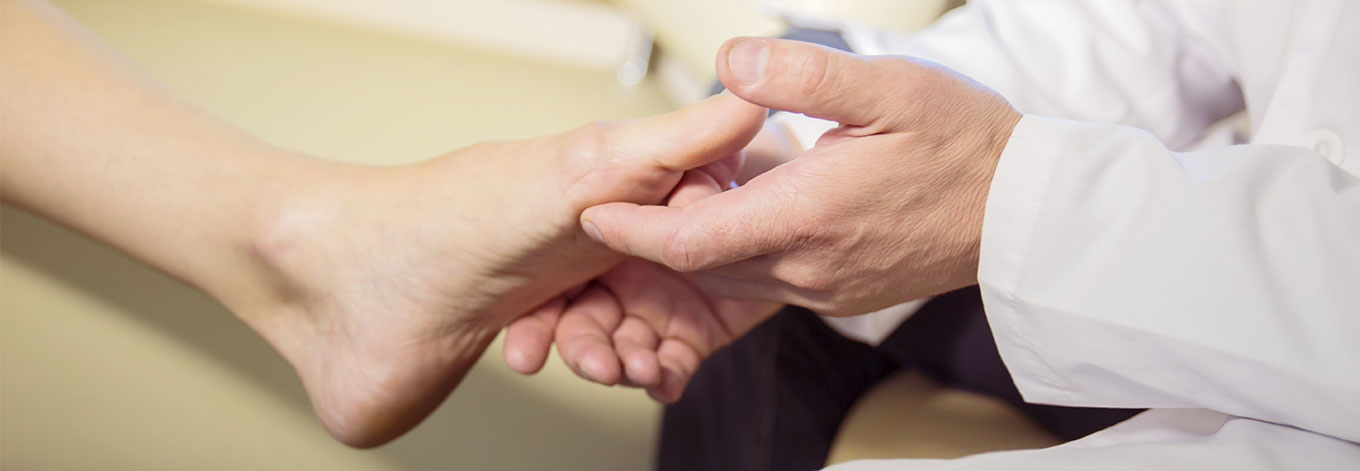
Types of bunion removal surgery
When you first begin to develop a bunion or first have a bunion diagnosed it is likely that you will be provided with a range of non-surgical bunion remedies to try and help ease any discomfort and stop the bunion from getting any worse. These include bunion pads, orthotics insoles and toe supports, splints or bunion correctors.
Do bunion correctors work UK?
The title ‘bunion corrector’ suggests some kind of magical cure but in reality, a bunion corrector is not going to correct your bunion. Bunion correctors are designed to separate the big toe from the rest of the other toes in an attempt to realign it to a new position.
In most cases, bunion correctors just cause discomfort, make it difficult to walk and they are often unable to be worn with shoes. We do not recommend the use of bunion correctors and if you are looking for a bunion cure then surgery is going to be your best option.
What are the bunion alternatives?
There are many alternatives to help you ease the symptoms of bunions, but none that will actively help to cure your existing bunion. If you feel your bunion is causing you pain and having an impact on your everyday life, then bunion surgery is your next step.
What is bunion surgery?
There are a range of different bunion surgery procedures out there. Some are provided on the NHS for patients that meet their criteria, and some are private.
Related: NHS Treatment for Bunions
Different types of bunion surgery include:
Osteotomy
What is an Osteotomy?
An osteotomy is a surgical procedure that involves cutting the bone to change its alignment. An osteotomy is commonly performed in the knee, hips, spine, jaw, chin, and big toe. A bunion osteotomy is often recommended for moderate to severe bunions and is usually combined with soft tissue realignment.
When treating a bunion, an osteotomy will be performed on the big toe and will involve cutting into the joint of the big toe and realigning it to a new position. The breaks in the one will be secured with pins, screws, or plates to hold the bones in a straighter position.
What aftercare does an Osteotomy involve?
A bunion osteotomy is usually performed under general anaesthetic and involves a stay in hospital. Patients will need crutches and to keep off their feet with their foot elevated as much as possible for around 6 weeks. Full recovery from a bunion osteotomy can take up to 6 months.
Exostectomy
What is an Exostectomy?
An exostectomy is when bone is removed from the body usually due to abnormal growth.
A bunion exostectomy is performed under local anaesthetic and involves shaving off the bony lump of the bunion with the aim of reducing pain and discomfort. The procedure is usually performed as a day case, so patients are able to return home in the hours following the procedure. This procedure does not correct the position of the toe so is only suitable for very mild bunions.
What aftercare does an Exostectomy involve?
Patients will need to be on complete rest for 2-4 weeks post-procedure with the foot in an elevated position. After 1 week you should be able to walk on the foot with crutches and without crutches after 2 weeks. Swelling still may be present on the foot for up to 6 months and a full recovery from a bunion exostectomy can take up to 6 months.
Arthrodesis
What is Arthrodesis?
Arthrodesis, also known as joint fusion, is when bones in a joint are artificially fused together to form a new fused joint. The new joint is fused which means there is no movement in the joint, so it is only performed in severe cases and when there is no other alternative option.
A bunion arthrodesis is performed under general anaesthetic. The surface of the joint (cartilage) is removed to help enable a bone fusion. A bone graft is then placed into the space between the bones to encourage a fusion. Fixative devices such as plates are then used to secure the bones together.
Another variation of an Arthrodesis procedure is a Resection Arthroplasty which is when part of the joint bone is removed to allow extra space between the bones and encourage the formation of a flexible scar joint. This procedure does come with risks however such as scar tissue not filling the space between the bones which can cause shortening of the toe which can impact walking.
What aftercare does an Arthrodesis involve?
Aftercare following an arthrodesis bunion procedure requires the patient to keep the foot elevated for 2 weeks and no weight must be put on the front of the foot. Those who work from a desk can return to work after 2 weeks but those in a more active or heavy manual job may require up to 3 months before they can safely return to work. It can take up to 6 months to recover from a bunion arthrodesis and your foot can remain swollen for up to a year.
Minimally Invasive Keyhole Bunion Surgery
What is a minimally invasive bunionectomy?
A minimally invasive bunionectomy procedure is available exclusively at The Private Clinic. The advanced procedure is performed by Orthopaedic Consultant Surgeon, Mr Bianchi, who pioneered this revolutionary procedure.
Performed under local anaesthetic the procedure involves the use of a special radiological device to allow the surgeon to see the bones and burrs without the need for larger incisions. Small 2-3mm incisions are made and dental burrs are used to make a series of small and precise fractures known as geometric fractures. The fractures are then left to heal naturally without the use of any fixative devices.
What aftercare does a minimally invasive bunionectomy involve?
Shortly after the procedure has taken place, patients are encouraged to walk fully on the foot that was operated on without the use of crutches. This encourages the correct physiological readjustments, and the bones are able to heal in a more natural position appropriate to the patient’s weight bearing. There is no need for extended downtime and many patients return to work 1-2 days post-procedure. Patients are required to wear specialised bandages and an orthopaedic boot for around 25 days post-procedure. At this time your bandaging will be reduced and, in most cases, you will also be able to remove your post-surgical shoe and wear comfortable shoes such as trainers.
Minimally invasive bunionectomy results
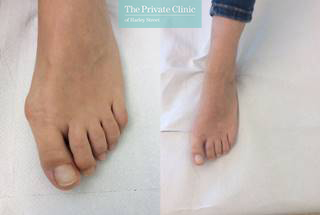
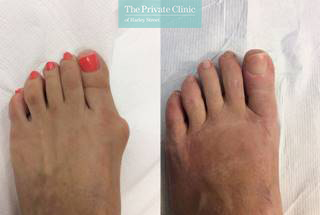
Related: See more Minimally Invasive Bunion surgery before and after photos.
Why Choose The Private Clinic for Bunion Treatment?
- Exclusive to The Private Clinic in the UK, there is no other operation like this one.
- A minimally invasive procedure, bunion removal surgery is performed under local anaesthesia using keyhole techniques.
- This is the only natural operation with no metal fixtures such as wires or screws being used.
- There is a 98% success rate following the bunion operation.
- Orthopaedic Consultant Surgeon, Mr Bianchi is an expert in his field and has been carrying out bunion operations for 15 years.
- Mr Bianchi carries out over 1,200 bunion operations a year.
- Walk immediately after surgery, with no crutches or extensive downtime required.
- Minimal post-operative pain and aftercare.
- 2-3mm skin incisions which leave no scar.
- Treatment is carried out in our state-of-the-art London Fitzroy hospital.
- 24-hour patient helpline direct to your nursing team and surgeon, which means should you have any concerns we are here to help.
- Our excellent reputation for patient safety and satisfaction, honest advice and outstanding care means your journey with The Private Clinic will be an exciting experience to a newfound confidence.
Helpful Links
- See our bunion before and after photos
- Watch our bunion treatment videos
- Read our bunion patient stories
Get in touch
To find out more about bunion surgery at The Private Clinic or to request an appointment with Orthopaedic Consultant Surgeon, Mr Bianchi at our clinics in London Harley Street, Manchester or Bournemouth give us a call on 0333 920 2471 or you can also use our online contact form for bunion surgery.





